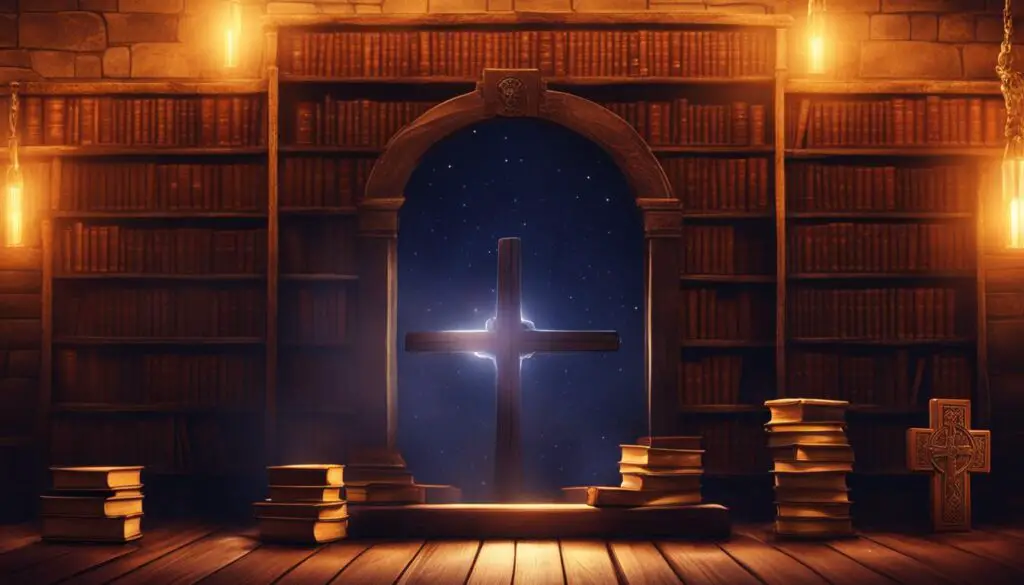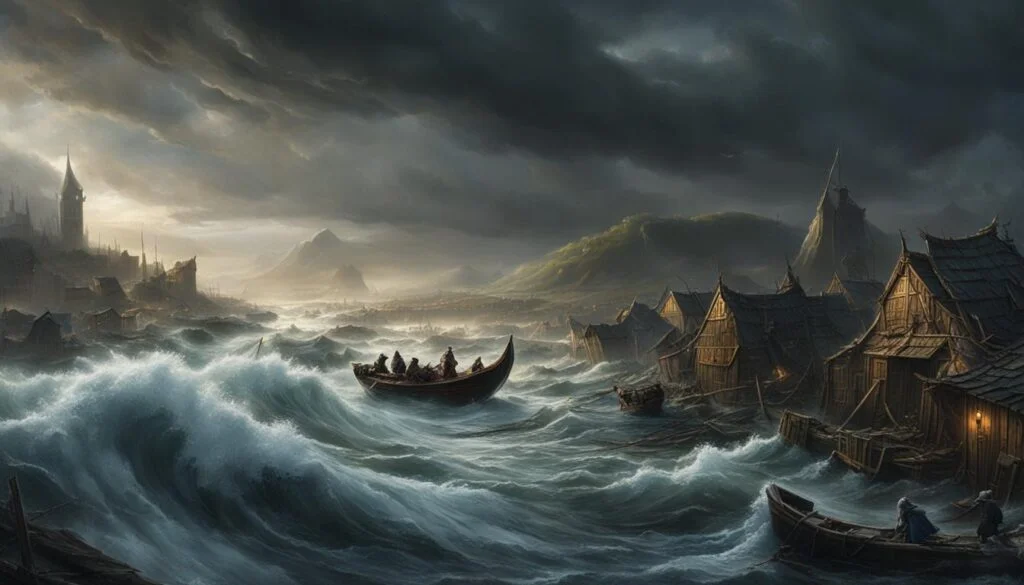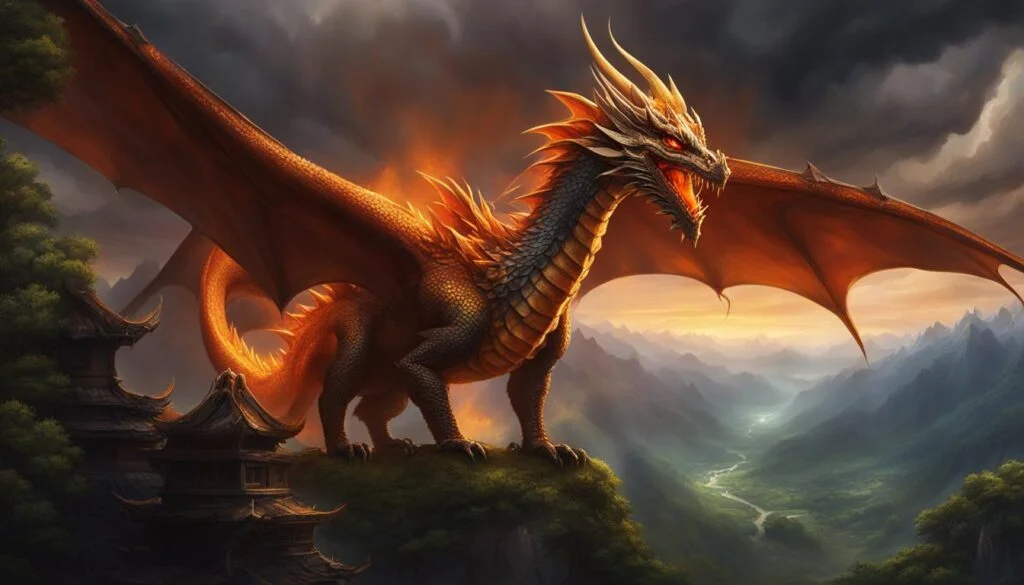Norse mythology is a fascinating and complex belief system that dates back to ancient times. People often wonder if it has a Bible or a sacred text like other religions do. To answer this question, we need to delve into the unique nature of Norse mythology and the way its stories were passed down through generations.
Key Takeaways:
- Norse mythology does not have a Bible or a single comprehensive text.
- Its stories were primarily an oral tradition, handed down through generations.
- The Poetic Edda and the Prose Edda are valuable written sources that provide insight into Norse mythology.
- These texts are not equivalent to a religious scripture but offer invaluable knowledge.
- Norse mythology continues to be celebrated and studied, influencing various aspects of culture and literature.
Why Norse Mythology Doesn’t Have a Bible
Norse mythology, unlike many other religions, does not have a Bible or any similar religious text. This is because Norse mythology was primarily an oral cultural tradition, with stories and beliefs passed down through generations verbally.
The Vikings, who practiced Norse mythology, did not have a tradition of written documentation for their religious teachings. They believed that the authenticity and power of their sacred songs and poems would be lost if they were written down and distributed to everyone.
The oral tradition of Norse mythology allowed for flexibility and adaptability, as stories could be tailored and modified according to the needs and interpretations of different communities. This dynamic nature of oral storytelling also made Norse mythology more accessible to the average person, as there was no dependence on literacy or formal education.
Although there are written sources that provide insights into Norse mythology, such as the Poetic Edda and the Prose Edda, these texts were not considered religious scriptures in the same way a Bible is for other religions. They are valuable resources for understanding Norse mythology, but they are not regarded as the definitive and authoritative texts of the faith.
Overall, the absence of a Bible in Norse mythology reflects the unique cultural and religious practices of the Vikings. The emphasis on oral tradition allowed for a dynamic and inclusive mythology that was shaped and preserved through storytelling and communal participation.
What Books or Literature Were Important to the Vikings?
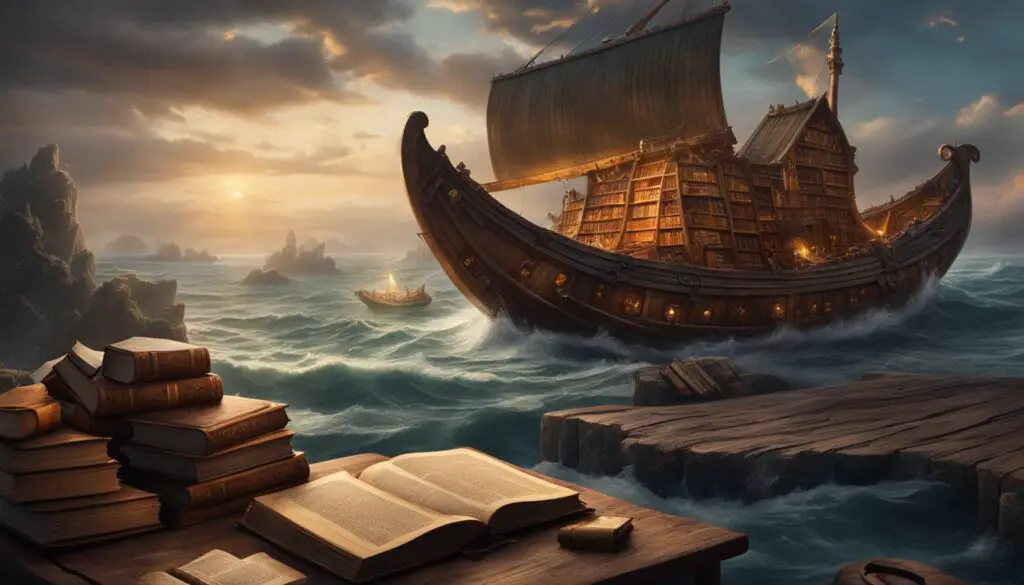
The Vikings had a rich cultural tradition rooted in oral storytelling. Instead of relying on specific books or written literature, their knowledge and stories were passed down through generations via word of mouth. However, in modern times, certain texts hold great importance for understanding Viking mythology and legends.
One significant text is the Poetic Edda, a collection of Old Norse poems that provides insights into the mythological beliefs and tales of the Vikings. Composed by various poets, these poems cover a wide range of topics, from the creation of the world to the exploits of gods and heroes.
The Prose Edda, written by Snorri Sturluson, is another invaluable source for Norse mythology. This text not only retells the myths but also delves into their poetic and storytelling techniques. Sturluson’s work provided a framework for understanding and preserving Norse mythology in written form.
While the Vikings did not possess written texts like a “Bible,” the Poetic Edda and the Prose Edda are considered essential literature for gaining insight into their religious and cultural beliefs. These texts demonstrate the enduring impact of oral tradition in shaping Viking mythology and its subsequent preservation through writing.
The Poetic Edda and the Prose Edda
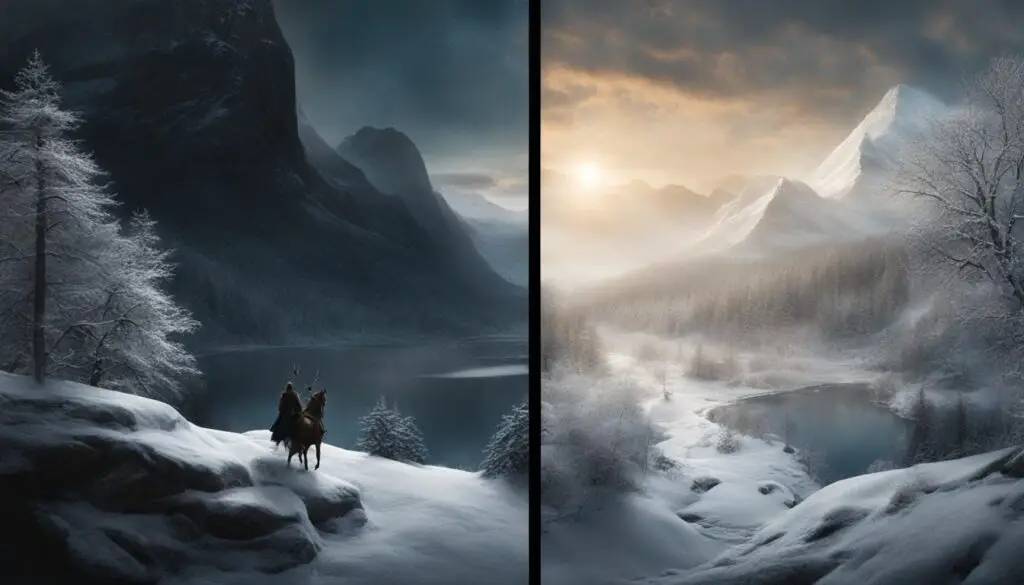
The Poetic Edda and the Prose Edda are considered the main sources for Norse mythology. These texts provide valuable insight into the rich and complex world of Norse mythology and are trusted sources by modern Norse mythologists.
The Poetic Edda contains a collection of epic poems and songs that were composed by Skalds, court performers who were revered as poetic and storytelling figures. These poems delve into the adventures, exploits, and beliefs of the Norse gods and heroes, offering a glimpse into their mythological world.
The Prose Edda, on the other hand, was written by Snorri Sturluson and acts as a documentation of the myths as told by others. It includes interpretations from Christian historical writers, providing a unique perspective on Norse mythology. Sturluson’s work serves as a comprehensive guide, offering explanations and insights into the complex narratives and symbolism of Norse mythology.
Both the Poetic Edda and the Prose Edda hold a significant place in the study and understanding of Norse mythology. They allow scholars and enthusiasts to explore and analyze the rich tapestry of gods, heroes, and mythical creatures that make up this ancient belief system.
Written Sources on Thor, Odin, Loki, and Freya
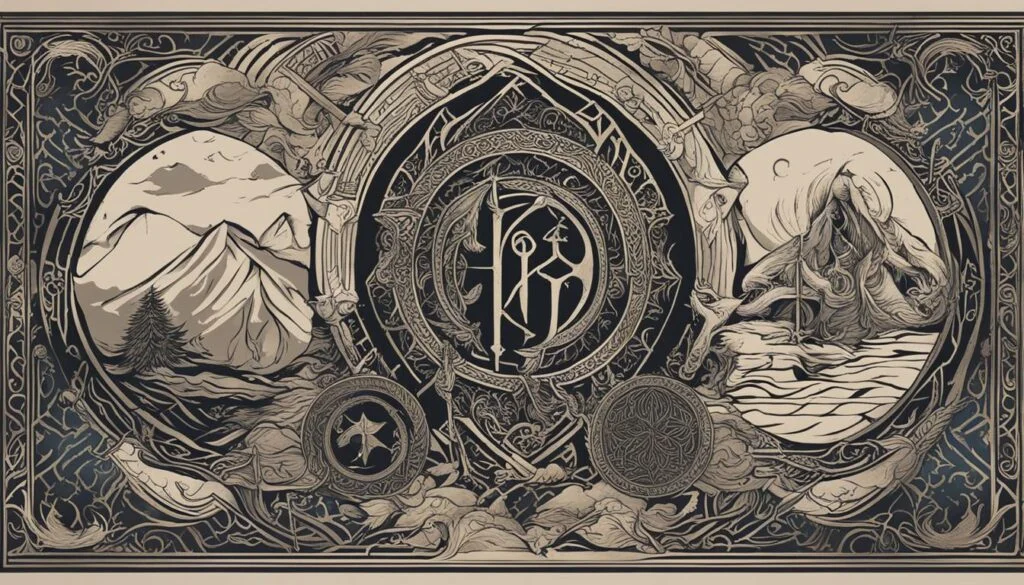
The Eddas serve as the main written sources on the esteemed Norse gods: Thor, Odin, Loki, and Freya. These ancient texts contain a wealth of poems and stories that vividly depict the exploits and adventures of these powerful deities. Within The Eddas, readers can explore the fascinating and complex mythological narratives surrounding these beloved Norse gods.
However, The Eddas are not the only written sources available. Descriptions written by Arabic travelers offer unique perspectives on Norse mythology, shedding light on the cultural interactions that shaped these stories. Skaldic poetry, composed by skilled Norse poets, also contributes to our understanding of the gods. Additionally, Christian accounts from Western Europe offer intriguing insights and interpretations of Norse mythology, showcasing the diverse influences that shaped these written sources.
Through these written texts, readers can immerse themselves in the captivating world of Norse mythology, gaining valuable knowledge and understanding of the gods and their significance in Norse culture.
Further Reading
- Sturluson, Snorri. Prose Edda
- Anonymous. Poetic Edda
- Arabic Travelers’ Accounts
- Skaldic Poetry
- Christian Accounts from Western Europe
Is Norse Mythology Found in Poetry?
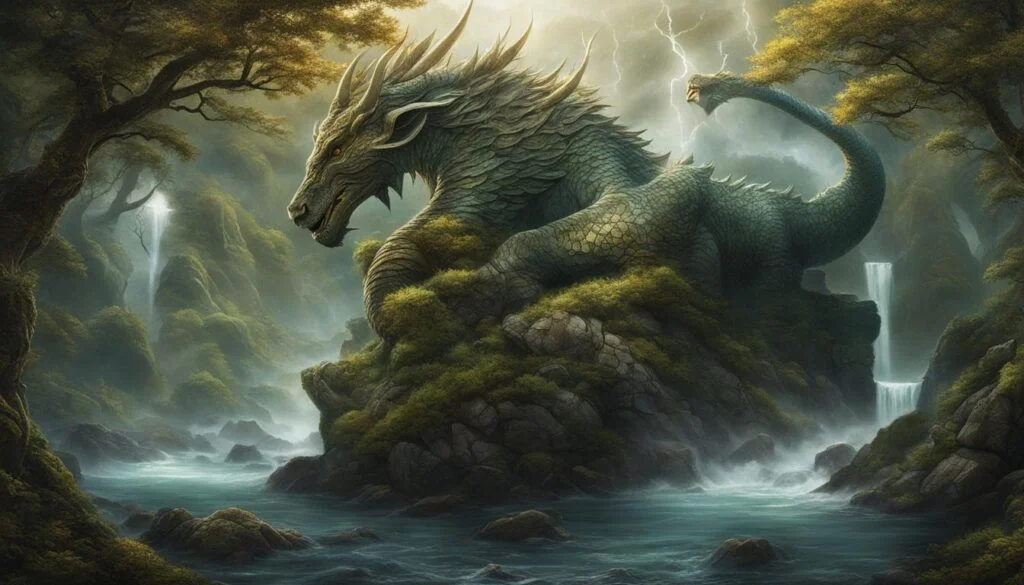
Norse mythology is not limited to ancient tales and legends but has also found its way into the realm of poetry. Throughout history, numerous poets have been captivated by the rich tapestry of Norse mythology, integrating its themes and characters into their poetic works.
Renowned poets like Walter Scott and the anonymous author of Beowulf have drawn inspiration from Norse mythology, incorporating its main characters and stories into their verses. These poetic interpretations breathe new life into the ancient tales, allowing readers to connect with the vibrant world of Norse gods and heroes.
Others, such as David Jones and William Blake, have taken a more abstract approach, adapting the central figures of Norse mythology to suit their own poetic themes and visions. Through their creative reinterpretations, these poets have explored the depths of Norse mythology, delving into its complexities and offering fresh perspectives.
Even in contemporary times, Norse mythology continues to be celebrated and explored through poetry. Many modern poets have been influenced by the grandeur and mystique of Norse mythology, infusing their works with its enchanting imagery, symbolism, and epic storytelling.
With its vivid descriptions, larger-than-life characters, and profound themes, Norse mythology provides a rich and evocative tapestry that poets can artfully weave into their verses. Whether it be the heroic deeds of Odin and Thor, the mischief of Loki, or the beauty and wisdom of Freya, Norse mythology offers a treasure trove of inspiration for poets to explore and share with their readers.
As the image above illustrates, the influence of Norse mythology in poetry is a captivating blend of ancient and contemporary elements. It bridges the gap between past and present, allowing readers to experience the timeless allure of Norse mythology through the power of poetic language.
Cultic Spaces and Rituals in Norse Mythology
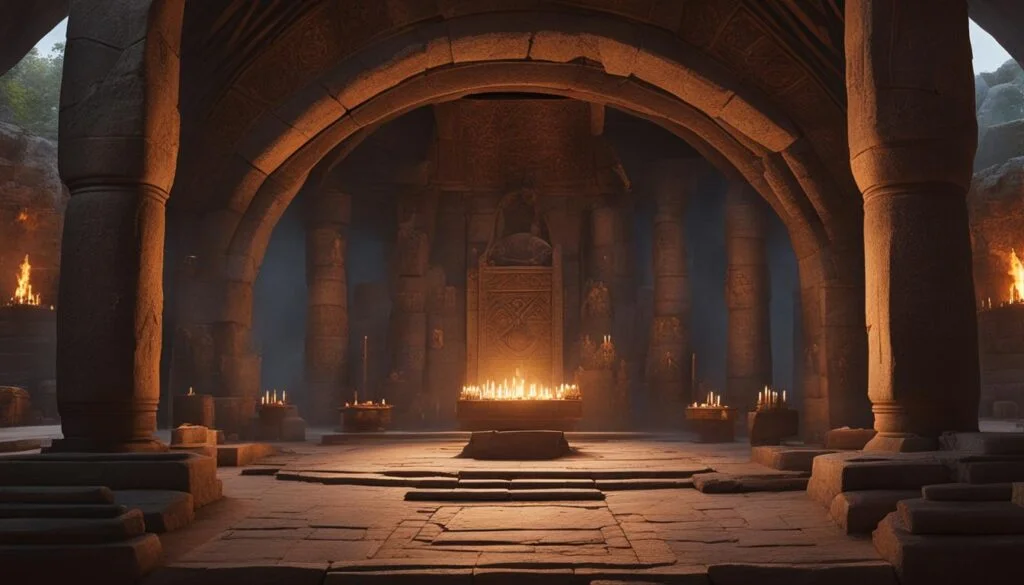
Within Norse mythology, ritual practice played an integral role in the expression of beliefs and traditions. Kings and chiefs held significant positions as they performed public acts of sacrifice, connecting the divine realm with the human world. These rituals were conducted in specific spaces known as cultic spaces, which evolved over time.
Originally, cultic spaces were chosen in natural surroundings such as groves and lakes. These natural elements were believed to possess inherent spiritual qualities that enhanced the ritual significance. As Norse society developed, purpose-built cult houses emerged as dedicated spaces for religious practices.
Believers in Norse mythology also engaged in the practice of Seiðr, a form of sorcery closely associated with ritual and divination. Seiðr involved the manipulation of unseen forces to gain insight or influence events. It was predominantly practiced by women, particularly those known as volvas, who possessed the ability to connect with the supernatural realms.
Various forms of burial were conducted by the Norse, reflecting their beliefs about the afterlife. Both inhumation (traditional burial) and cremation were practiced, with grave goods often accompanying the deceased. These grave goods were intended to accompany the individual into the afterlife and ranged from personal belongings to tools and weapons.
Overall, ritual practice in Norse mythology was diverse and encompassed elements such as sacrifice, sorcery, and burial customs. These practices provided the community with a means to connect with the divine, maintain social order, and honor their ancestral heritage.
Norse Mythology and Cultural Interaction
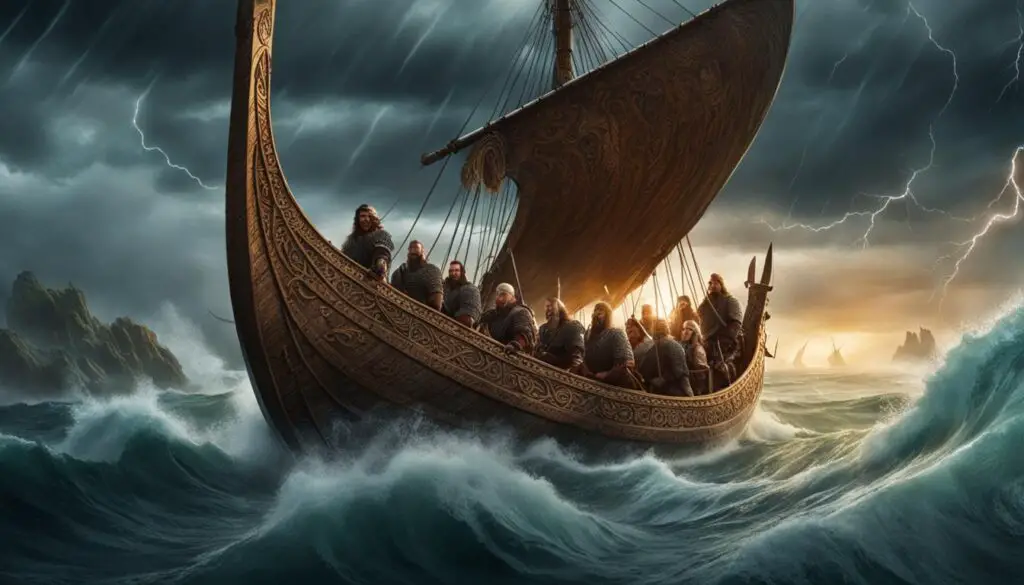
Norse mythology had significant interactions with other cultures, most notably with the Sami and Finns. These encounters gave rise to cultural exchange and cross-pollination, resulting in the mutual influence of beliefs and practices. The Norse mythological tradition transcended geographical boundaries and became a source of inspiration for later folklore and literature, both within Scandinavia and beyond.
One of the key aspects of Norse mythology’s cultural interaction was its encounter with the Sami people, who inhabited the northern regions of Scandinavia. The Sami, with their rich spiritual traditions, had their own mystical worldview, which merged with elements of Norse mythology. This integration resulted in a unique blend of beliefs and rituals that reflected the intermingling of the two cultures.
Similarly, the Finns, who resided in present-day Finland, had their own distinct mythological system. When Norse and Finnish cultures came into contact, the Finns’ shamanistic practices influenced Norse mythology, particularly in relation to the figure of Odin. The parallels between Finnish and Norse mythologies can be observed in the similarities between Finnish shamans and the Norse concept of seidr, a form of sorcery associated with Odin.
Norse Mythology’s Influence on Other Cultures
The influence of Norse mythology extended far beyond the realms of the Sami and Finns. As Scandinavian explorers and traders ventured beyond their homelands, they carried their myths and stories to new lands and cultures. This dissemination of Norse mythology had a profound impact on the belief systems and literary traditions of other societies.
- The Vikings, renowned for their seafaring prowess, introduced their mythological tales to the British Isles. Elements of Norse mythology can be found in Anglo-Saxon and Celtic folklore, where characters like Thor and Odin were assimilated into the native myths.
- The Scandinavian influence extended even further, reaching as far as Iceland, where the sagas were written. These sagas, steeped in Norse mythology, would go on to inspire generations of Icelandic writers.
- During the Medieval period, the spread of Christianity led to the incorporation of Norse mythical characters into Christian narratives. This can be seen in the works of famous medieval writers, such as Snorri Sturluson, who interpreted and adapted Norse mythology within a Christian framework in his Prose Edda.
The influence of Norse mythology on other cultures is a testament to its enduring appeal and widespread reach. Through cultural interaction and the exchange of ideas, Norse mythology left an indelible mark on the belief systems and literary traditions of numerous societies, shaping the cultural fabric of both the past and present.
Conclusion
In summary, Norse mythology does not have a Bible or a single comprehensive text like other religions. Instead, it was an oral tradition, with stories being passed down from one generation to another. While the Poetic Edda and the Prose Edda are valuable written sources that provide insights into Norse mythology, they do not serve as religious scriptures.
Despite the absence of a singular authoritative text, Norse mythology continues to be celebrated and studied today. Its influence can be seen in various aspects of culture and literature, both within Scandinavia and beyond. The stories of powerful gods like Thor, Odin, Loki, and Freya captivate readers and inspire poets and authors to this day.
While Norse mythology may lack a definitive holy book, its rich oral tradition and the surviving texts like the Poetic Edda and the Prose Edda ensure that its stories and beliefs live on. As scholars and enthusiasts delve deeper into the world of Norse mythology, its impact on the past and present becomes increasingly clear.
FAQ
Does Norse mythology have a Bible or a similar religious text?
No, Norse mythology does not have a Bible or any similar religious text. Its stories and beliefs were primarily passed down orally through generations.
Why doesn’t Norse mythology have a Bible?
Norse mythology was an oral cultural tradition, and the Vikings believed that written documentation would compromise the authenticity of the sacred songs and poems.
What books or literature were important to the Vikings?
The Vikings did not have specific books or literature that were crucial to their religious beliefs. The oral tradition was the main means of transmitting knowledge and stories.
What are the Poetic Edda and the Prose Edda?
The Poetic Edda and the Prose Edda are valuable written sources for Norse mythology. The Poetic Edda contains epic poems and songs composed by Skalds, while the Prose Edda documents myths as retold by others.
Are there written sources on Norse gods like Thor, Odin, Loki, and Freya?
Yes, the main written sources on Norse gods are the Poetic Edda and the Prose Edda. These texts contain poems and stories featuring these deities and their exploits.
Is Norse mythology found in poetry?
Yes, Norse mythology has inspired and influenced many poets throughout history. Poets have incorporated its themes and characters into their works, creating a rich and poetic exploration of Norse mythology.
What were the cultic spaces and rituals in Norse mythology?
Norse mythology was closely tied to ritual practice. Kings and chiefs played central roles in public acts of sacrifice, which took place in groves, lakes, and purpose-built cult houses. Believers also practiced Seiðr, a form of sorcery.
Did Norse mythology have interactions with other cultures?
Yes, Norse mythology had interactions with cultures such as the Sami and Finns, resulting in cultural exchange and cross-pollination. Norse mythology also influenced later folklore and literature in Scandinavia and beyond.
What is the conclusion about Norse mythology?
Norse mythology does not have a Bible or a single comprehensive text. It was primarily an oral tradition, with the Poetic Edda and the Prose Edda being valuable written sources. Norse mythology continues to be celebrated, studied, and influences various aspects of culture and literature.


